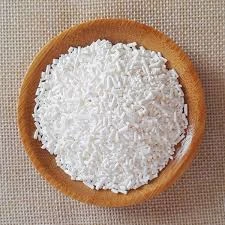
controlled release fertilizer
The Role of Controlled Release Fertilizers in Sustainable Agriculture
In recent years, the agricultural sector has increasingly turned towards sustainable practices to address the growing concerns about food security, environmental degradation, and the efficient use of resources. One pivotal development in this realm is the emergence of controlled release fertilizers (CRFs), which offer a promising solution to maximizing crop yield while minimizing negative environmental impacts.
Controlled release fertilizers are designed to release nutrients at a regulated rate over an extended period. This innovation allows for the synchronization of nutrient availability with the crop's growth stages, ensuring that plants receive essential nutrients precisely when they need them. The design of these fertilizers typically includes a coating that encapsulates the nutrient granules, allowing water to penetrate slowly and dissolve the nutrients, which are then released gradually into the soil. This method reduces the frequency of applications, lowers labor costs, and minimizes fertilizer runoff, which can contaminate water supplies.
One of the most significant advantages of CRFs is the reduction of nutrient leaching. In traditional fertilization practices, especially with soluble fertilizers, a substantial amount of nutrients can wash away during rainfall or irrigation. This not only wastes resources but also contributes to environmental issues such as water eutrophication—a process where water bodies become excessively enriched with nutrients, leading to algal blooms and subsequent dead zones. By using CRFs, farmers can significantly enhance nutrient retention in the soil, thereby decreasing the potential for environmental harm.
controlled release fertilizer

Moreover, CRFs enhance the efficiency of nutrient uptake by crops. Traditional fertilization often results in nutrient concentrations that exceed plant demand, leading to nutrient imbalances and potential toxicity. Controlled release fertilizers mitigate this problem by providing a steady nutrient supply, allowing plants to absorb what they need for optimal growth. This efficiency not only improves crop health but can also lead to higher yields and better quality produce, which is essential as the global population continues to rise.
Furthermore, CRFs support the principles of precision agriculture, where farmers utilize technology to monitor field variability and tailor inputs accordingly. This compatibility means that CRFs can be integrated into modern farming practices, aligning with data-driven approaches to optimize crop management.
Despite the numerous benefits of controlled release fertilizers, it is vital to address the challenges associated with their use. The cost of CRFs is generally higher than that of conventional fertilizers, which may deter some farmers from adopting them. Additionally, the effectiveness of CRFs can vary depending on soil type, climate, and crop species. Therefore, research and development remain crucial to enhance their formulation, affordability, and applicability across diverse agricultural contexts.
In conclusion, controlled release fertilizers represent a significant step towards sustainable agriculture, offering a solution that addresses both the nutritional needs of crops and the environmental concerns posed by traditional fertilization methods. As technology advances and agricultural practices continue to evolve, the integration of CRFs could play a crucial role in meeting global food demands while safeguarding our planet's ecosystems. Embracing such innovations is essential for building a more sustainable future in agriculture.
-
Pure Sodium Dichloroisocyanurate Dihydrate | Powerful DisinfectantNewsAug.29,2025
-
Industrial Chemicals: Quality & Purity for Every IndustryNewsAug.28,2025
-
Nitrile Rubber Honoring Strict Production StandardsNewsAug.22,2025
-
Aspartame Ingredients Honoring Food Safety ValuesNewsAug.22,2025
-
Fertilizer for Balanced Plant NutritionNewsAug.22,2025
-
Cyanide Gold Processing with High Purity AdditivesNewsAug.22,2025
-
Formic Acid in Textile Dyeing ApplicationsNewsAug.22,2025
Hebei Tenger Chemical Technology Co., Ltd. focuses on the chemical industry and is committed to the export service of chemical raw materials.
-

view more DiethanolisopropanolamineIn the ever-growing field of chemical solutions, diethanolisopropanolamine (DEIPA) stands out as a versatile and important compound. Due to its unique chemical structure and properties, DEIPA is of interest to various industries including construction, personal care, and agriculture. -

view more TriisopropanolamineTriisopropanolamine (TIPA) alkanol amine substance, is a kind of alcohol amine compound with amino and alcohol hydroxyl, and because of its molecules contains both amino and hydroxyl. -

view more Tetramethyl Thiuram DisulfideTetramethyl thiuram disulfide, also known as TMTD, is a white to light-yellow powder with a distinct sulfur-like odor. It is soluble in organic solvents such as benzene, acetone, and ethyl acetate, making it highly versatile for use in different formulations. TMTD is known for its excellent vulcanization acceleration properties, which makes it a key ingredient in the production of rubber products. Additionally, it acts as an effective fungicide and bactericide, making it valuable in agricultural applications. Its high purity and stability ensure consistent performance, making it a preferred choice for manufacturers across various industries.





